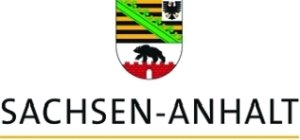Saxony-Anhalt Cultural Heritage
Synergies for Saxony-Anhalt
The State Museum of Prehistory in Halle would like to consolidate its status as one of the most well-known ambassadors of the rich and diverse cultural landscape of Saxony-Anhalt, deepen its quality, and expand it in the medium term. In order to achieve this goal, the funding project ›Sachsen-Anhalt KULTURERBE – Synergien für Sachsen-Anhalt‹ is to be implemented.
Renovations, modernisations, and further developments in various areas are intended to make the house even more visible as a point of attraction for cultural tourists. Beyond schoolchildren, students, and specialist audiences, its aura should be directed even more towards the residents of the city of Halle (Saale), the surrounding region, and the state of Saxony-Anhalt and all demographic groups. As before, the focus is on the preservation and further development of the cultural heritage in the form of legacies from early humans up to the beginning of modern times. The desired synergy effect for the state of Saxony-Anhalt will go far beyond the mere number of visitors and focus on qualitative and sustainable development in the areas of ›state image‹ and ›identity formation‹ - and thus have an internal and external effect for Saxony-Anhalt.
Six sub-projects from the sectorsof the permanent exhibition, knowledge transfer, and barrier-free communication form the indispensible individual parts of this project and also ensure the future viability of the house. This includes on the one hand, structural and technical measures for barrier-free access as well as the renovation of the lighting and the existing rooms of the permanent exhibition as a result of heavy visitor traffic. On the other hand, structural measures and space-creating designshall lead to the realisation of the remaining sections of the permanent exhibition.
The project serves to improve the presentation and sustainable use of the cultural heritage in the state of Saxony-Anhalt. The funding is financed also by the European Regional Development Fund, with the European Union contributing up to 80% of the total eligible expenditure.
Completion took place in 2022.



